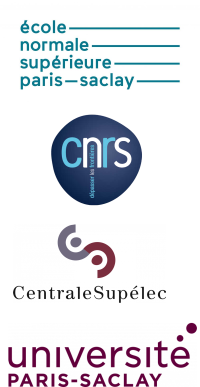Principal Investigators: JS Lauret (ENS Paris-Saclay); L. Rondin (University Paris Saclay)

The outstanding electronic, optical and mechanical properties of graphene have inspired the scientific community at both the fundamental and application levels. However, along the way several key scientific issues have to be addressed and one of the main challenges is the control and the modification of graphene electronic properties. This concerns notably the controlled opening of a sizable bandgap (of few hundreds of meV). Indeed, despite its exceptional carrier mobility of high interest for future applications, graphene is a zero-bandgap semiconductor. Therefore, a graphene layer in itself is not appropriate for most applications in electronic or in optoelectronic.
It is well known that when a material is reduced to nanoscale dimensions, the electronic confinement induces original size-dependent properties. The reduction of one dimension of graphene down to the nanoscale leads to graphene nanoribbons (GNRs) while the reduction of the two dimensions leads to graphene quantum dots (GQDs). Size reduction is not the only way to open a gap in graphene. A very appealing alternative to the reduction of graphene dimensionality consists in forming an ordered array of holes in a graphene sheet. This 2D-material theoretically proposed in 2008 was called a Graphene Nanomesh (GNM) or a Graphene Anti-dot Lattice (GAL) (see Figure).
In our group, we focus on the study of the electronic and optical properties of GNRs and GQDs using single molecule spectroscopy tools. Recently, we have, for example, shown that GQDs can be very efficient and stable single photon emitters at room temperature [1]. The next challenge is to be able to develop a relyable structure to properties link. To do so, the group is leading a FLAG-ERA project gathering chemists (synthesis of GQDs structures), experimentalist physicists (optical studies) and theoreticians (electornic and optical properties calculations).
Collaborators (ANR and FLAG-ERA projects)
- S. Campidelli group at CEA (chemsitry)
- C. Voisin group at LPENS (Optics)
- A. Narita at Mainz and OIST (chemistry)
- D. Beljonne at Mons University (Theory)
[1] S. Zhao et al, Nature Communication 9, 3470 (2018)


